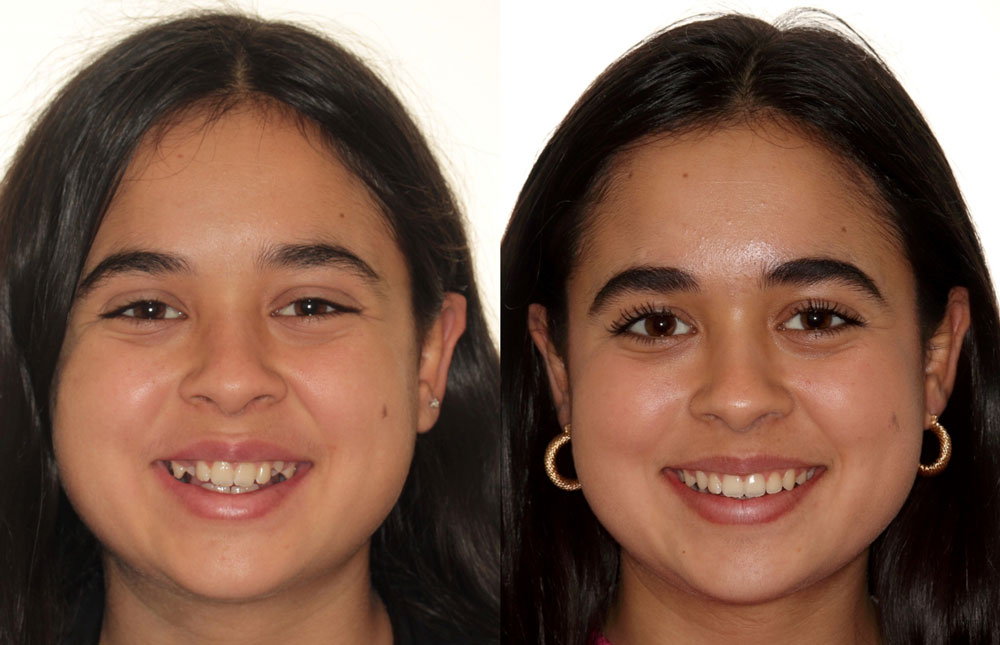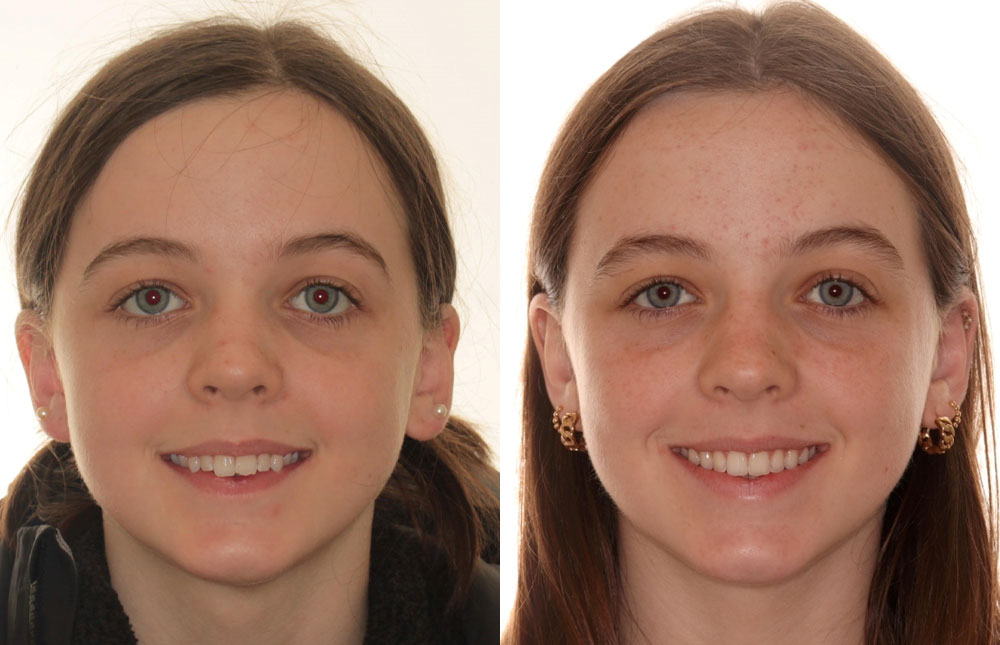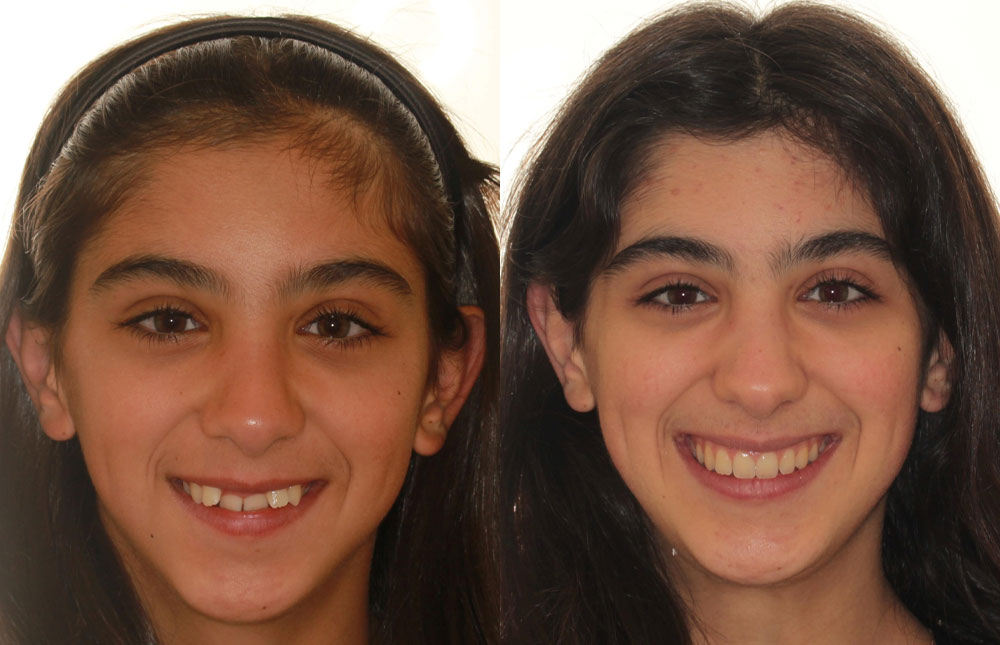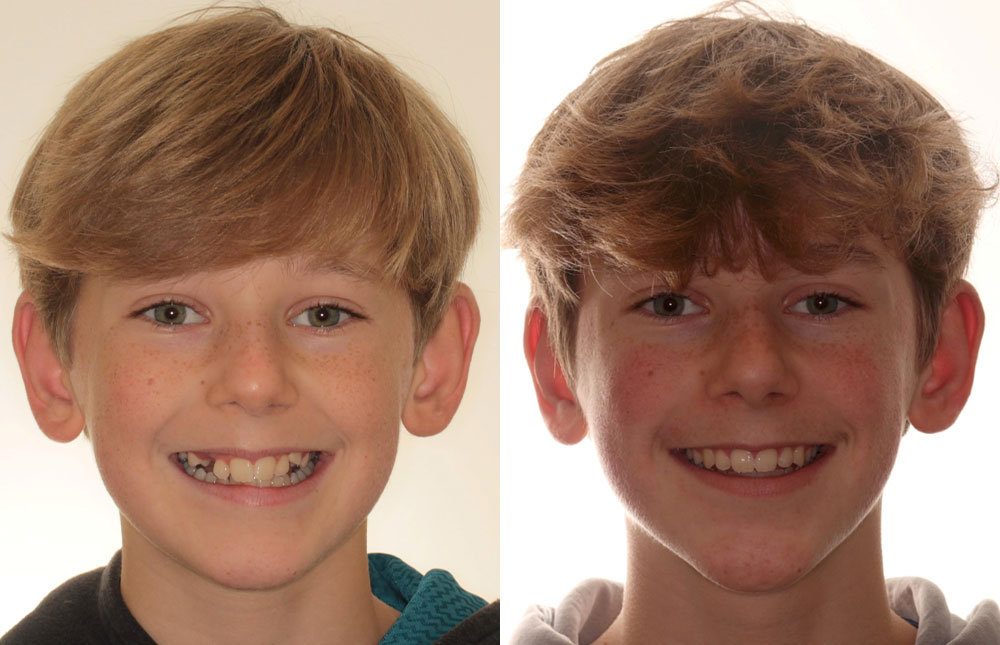12 to 16 years of age is the most common time to treat patients orthodontically so that we can tackle several issues simultaneously. We can capitalize on the final stages of the transition from baby teeth to permanent teeth to manage crowding and spacing, work with some growth changes for bite corrections, and typically finish treatment with all permanent teeth so that our results can be maintained with retainers.
Teen Treatment approaches
**Below is a sample of patients who recently finished treatment at Noxon Orthodontics. All of the cases below are REAL patients who were treated using Invisalign or braces.**
Typical reasons for treatment:
A beautiful smile
Most patients simply want straight, beautiful smiles! It does not matter if there is a small space, mild crowding, or a few crooked teeth, all patients want a beautiful, radiant smile, even if they do not have major functional concerns.
Misalignment
Sometimes misaligned teeth can contribute to unhealthy gums, uneven tooth wear, tooth chipping, tooth trauma, cheek/lip biting, etc. Misaligned teeth are also more difficult to clean and put teeth at greater risk for cavities and gum disease.
Protrusion
Protruded teeth are more susceptible to fracture and damage because of their more exposed positions. The supporting gums are also more likely to recede. Protrusion can also eliminate contact with lower teeth which can create chewing challenges and unwanted contact between lower teeth and upper gums.
Underbite
Underbites can produce awkward shifting of the lower jaw and damage to teeth that hit heavily, since several other teeth do not contact at all. Uneven contacts between teeth can contribute to unhealthy gums, uneven tooth wear, tooth chipping, tooth trauma, etc. This type
of bite can also be very noticeable aesthetically.
Spacing
Most people do not like the appearance of spacing and like to see them closed. Spaces can also contribute to getting food stuck between your teeth, gum issues, and tooth socket bone loss.
Crowding
Crowded teeth are often more difficult to clean and put teeth are greater risk for cavities and gum disease. Because crowded teeth do not contact uniformly, they are also more susceptible to uneven tooth wear, tooth chipping, tooth trauma, cheek/lip biting, etc.
Deep Bite
Deep bites can be very damaging to the gum tissue behind the upper front teeth. Gum tissues do not react well to teeth repeatedly biting into them. Long term, these unwanted contacts can result in recession, bone loss, and tooth loss.
Openbite
Openbites place a substantial amount of wear and tear on teeth that are in contact, since they are doing the bulk of the chewing work and so many other teeth in the mouth are not contributing much. Having segments of teeth that do not meet normally, or even meet at all, also makes chewing more difficult.










































